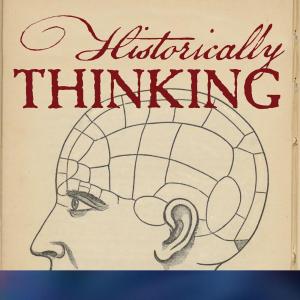Historically Thinking

Episode 340: Price of Collapse
“We live in a world that feels as though it is in the grip of rapid and capricious change. To rescue ourselves from the distress and dismay that change can induce, we tell ourselves that flux is the signature of contemporary life and sets us apart from the simpler worlds in which those before us lived... Yet we really have little ground to be so confident that present flux is outdoing past, for there have been times when the very conditions of survival were stripped from our predecessors, denying them the dignity of living well. This book is about one of those times, China in the early 1640s, when massive climate cooling, pandemic, and military invasion sent millions to their deaths.” Those are the words of my guest Timothy Brook, which begin his new book The Price of Collapse: The Little Ice Age and the Fall of Ming China. Founded in 1368, the Ming overthrew Mongol rule, eventually moved the capital of China to Beijing, and ushered in centuries of economic growth, dazzling cultural achievements, and a doubling of the population. This book is an inquiry into how that achievement collapsed–and why. Timothy Brook is Professor Emeritus of History at the University of British Columbia. His work focuses on the Ming Dynasty, but has extended to both earlier and much later eras. This is his second appearance on the podcast; he was last on in Episode 180 to discuss his book Great State: China and the World. For Further Investigation Porcelain was mentioned in the course of the conversation; for the European industrial aesthetic drive to match China's capacity to make beautiful porcelain, see my conversation with Suzanne Marchand in Episode 110 Tim Brook believe that prices are tools by which to diagnose climate change on par with taking sample cores from glaciers, or examining tree rings. While I've never had a conversation about glacier cores with anyone (but I'm open to it), I have had one about tree rings in Episode 156: The Stories Told By Trees. An even bigger perspective on climate–but one without the granularity and fine detail provided by price history–was provided by Philip Jenkins in Episode 209: Climate, Catastrophe, and Faith Transcript [00:03:08] Al: Tim Brooke, welcome back to the podcast. [00:03:10] Tim: Thank you, Al. It's a pleasure to be here. [00:03:13] Al: Before we get to anything else, we should probably do a definition. What is price history? Since we're going to be discussing price history a lot. Before we get to China, let's get to the even stranger terrain of price history. [00:03:31] Tim: The project began not as a project to understand climate change. The project began because I wanted to understand the most basic, simple fact that Anyone in a somewhat commercialized society has to deal with, and that is, how much do things cost? It was, so it was a very kind of simple minded question that I had. [00:03:58] Tim: I just wanted to know, [00:04:00] what did you, what did it cost to live during the Ming Dynasty? And I've worked on the Ming Dynasty for long enough that I had a good sense of what society and economy and politics were like during the period. So what I wanted to do is go down to the level of daily life and figure out, what did things cost? [00:04:18] Tim: Did people have enough? income to be able to buy the things they needed. How was that income distributed? How were costs managed? So I started out with this very simple idea. And in fact, the idea was niggling in the back of my mind for about two decades. And so over the last two decades, Whenever I'm reading a source of the Ming, I pick out the prices of things when prices of things are mentioned. [00:04:43] Tim: Now, there is no European historians have got a huge edge on China historians over the question of prices because there's any number of sources that European scholars can use, market sources, parish records, and so [00:05:00] forth. In China,






 Visit Podcast Website
Visit Podcast Website RSS Podcast Feed
RSS Podcast Feed Subscribe
Subscribe
 Add to MyCast
Add to MyCast